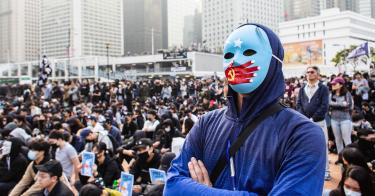At least 80,000 Uighur Muslims in China were transferred out of Xinjiang to work in factories in other places in China where they may be subjected to forced labor or forced labor-like conditions, according to a new report by the Australian Strategic Policy Institute (ASPI).
Some of them are believed to be from China’s political re-education camps, which currently hold between 1 and 3 million Uighurs in extrajudicial detention.
It is widely known that Uighurs in camps are often forced to forsake their language in favor of Mandarin, are subjected to indoctrination and self-criticism sessions. Some even face torture, and, in rare instances, death.
Concerns that detainees in camps were subject to forced labor surfaced early on, but until a November 2019 leak of internal documents from China, now known as the Xinjiang Papers, the practice was not widely confirmed. The ASPI report adds further color to the Xinjiang Papers revelations.
This is hardly the first time that the Chinese government has conducted re-education through labor. The report confirms the suspicion of many that China resurrected its practice of re-education through forced labor—or perhaps more accurately, that such a practice never ended.
Earlier evidence from reports documenting life in re-education facilities suggested that re-education constituted training professional, well-educated Uighurs to become working class, blue-collar workers lining the supply chains of Chinese industry. Rejection of the professions in favor of trades is reminiscent of practices during the Cultural Revolution where people were moved from the cities to the countryside and forced to take on agricultural work or factory labor.
The ASPI report documents an especially pernicious practice of what is called labor transfers. Labor transfers are the practice of Uighurs being transferred from re-education facilities or their hometowns to factories where they are subjected to long work hours, limited pay, and in some cases, prohibited from leaving work, even for holidays. These laborers also endured compulsory indoctrination sessions held at their place of employment outside of work hours.
Patterns documented in the report are classic cases of collectivization and redistribution of labor—and raise several questions about the nature of these labor transfers, whether voluntary or not.
Re-education facilities in Xinjiang share traits in common with facilities established during the Cultural Revolution. In fact, camps during the Cultural Revolution were often disguised as legitimate industries. For example, the primary internment facilities, also known as laogai, were called the Jingzhou Industrial Dye Works and the Yingde Tea Plantation, although in reality both were large prisons.
Forced labor often took place for state-owned enterprises in these laogai facilities. The ASPI report confirms suspicions that factories otherwise used for legitimate business purposes are doubling as additional re-education facilities for Uighurs.
The ASPI report specifically connects forced labor sourced from 27 factories in China to at least 83 well-known global brands.
This raises further questions as to whether or not goods produced with forced labor in Xinjiang have made their way into U.S. supply chains. These findings seem to suggest that they may have.
If this is the case, it has significant implications for the U.S. response to the crisis in Xinjiang.
According to Section 307 of the Tariff Act of 1930, goods produced in whole or in part with forced labor are restricted from being imported to the U.S. Goods made with forced labor and imported to the U.S. are subject to seizure and criminal investigations may result.
Customs and Border Protection (CBP) already began investigations into whether goods produced with forced labor in Xinjiang made their way into U.S. supply chains and found that they had. On October 1, 2019, CBP issued a Withhold Release Order (WRO) that restricts the importation of goods produced by Hetian Taida because it found that the factory was using forced labor from Xinjiang to produce those goods. WRO’s required a shipment of baby clothes produced by Hetian Taida to be sent back to China before they were sold to American consumers at Costco.
If goods produced with forced labor in Xinjiang continue to make their way into U.S. markets, there may be significant consequences to U.S. businesses found complicit.
A report released by The Heritage Foundation urged the U.S. government to go a step further by creating a rebuttable presumption that all goods made in political re-education camps in Xinjiang are produced with forced labor. This would expand the CBP’s authorities and enable them to freeze all imports of goods produced with forced labor in Xinjiang.
There should be no place for forced labor or goods produced with forced labor in the U.S.
As the U.S. considers the myriad of responses to the crisis in Xinjiang, continuing to target forced labor should be among them.
This piece originally appeared in Forbes https://www.forbes.com/sites/oliviaenos/2020/03/19/the-us-should-do-more-to-tackle-forced-labor-in-xinjiang/#464a630c1324



